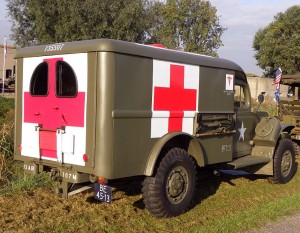 ICORD researchers Dr. Peter Cripton and Dr. Brian Kwon have received funding from the United States Department of Defense for a unique interdisciplinary study that may lead to changes in the way that individuals are transported immediately following spinal cord injury (SCI).
ICORD researchers Dr. Peter Cripton and Dr. Brian Kwon have received funding from the United States Department of Defense for a unique interdisciplinary study that may lead to changes in the way that individuals are transported immediately following spinal cord injury (SCI).
The $2.3 million Applied Research and Advanced Technology Development Award is funding a project to study the allowable limit of vibrations (such as those caused by a bumpy ambulance ride to the hospital or a helicopter evacuation) on acute SCI. The data obtained from this study could result in special stretchers or type of body position for transportation, or define the maximum time a patient with a new SCI could be transported before receiving care.
Dr. Cripton is a biomechanical engineer, whose research looks at preventing spine, spinal cord, brain and hip injuries as well as the efficacy of devices and procedures used in spine surgery. He is the Patrick Campbell Chair in Mechanical Design at UBC, and in addition to being an Associate Professor in the UBC Department of Mechanical Engineering and an associate faculty member of the UBC Department of Orthopaedics he is also a Principal Investigator in the UBC/VCH Centre for Hip Health and the UBC Brain Research Centre.
Dr. Cripton originally worked with ICORD colleague Dr. Bonnie Sawatzky to investigate the effects of vibration of different types of wheelchair wheels on spasticity in SCI. This research caught the attention of scientists at the US Department of Defense, who encouraged Dr. Cripton to consider other ways that vibration could affect SCI. In the United States, spinal cord injury affects members of the military in active combat at a much greater rate than the civilian population.

